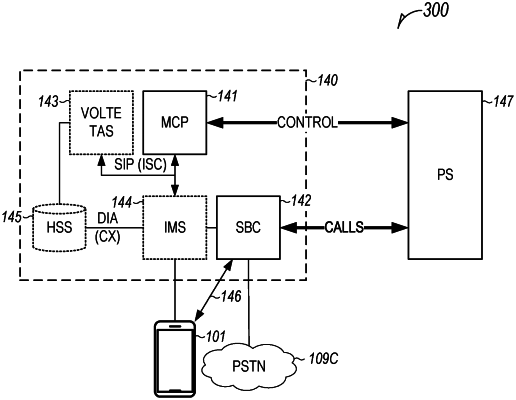| CPC H04M 1/72484 (2021.01) [H04L 65/1089 (2013.01); H04M 1/72403 (2021.01); H04M 1/724631 (2022.02)] | 20 Claims |

|
1. A system for causing a call leg transition based on determining that a screen of a device is not viewable to a user, comprising:
one or more processors; and
a memory storing computer-executable instructions that, when executed, cause the one or more processors to control the system to perform operations comprising:
receiving, using a default first telephony application, an incoming call event having a first call leg over a first connection to a telecommunication network addressed to the device;
accepting the incoming call event using a second telephony application, creating a second connection having a second call leg to the telecommunication network corresponding to the incoming call event;
associating a call event continuity identifier unique to the incoming call event with each of the first and second call legs so that the first and second call legs are connectable at a common port in the telecommunication network;
determining if the screen of the device is viewable to the user; and
causing a transition from the second call leg to the first call leg based on determining that the screen of the device is not viewable to the user.
|